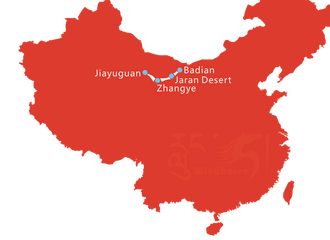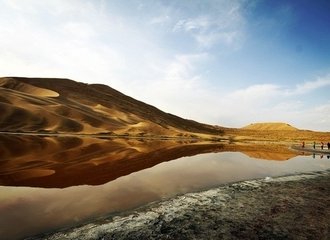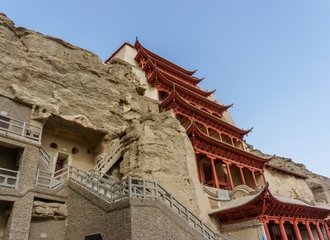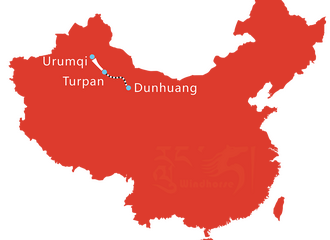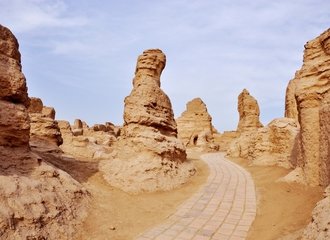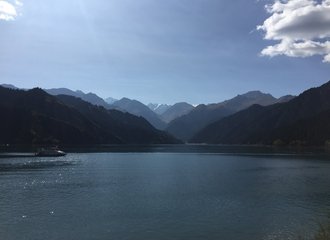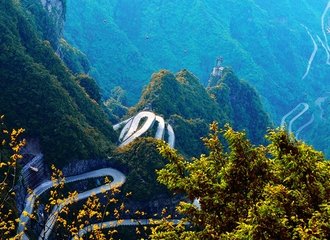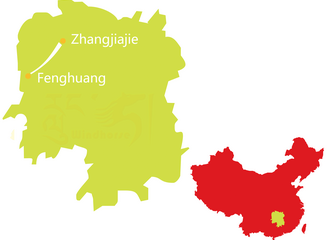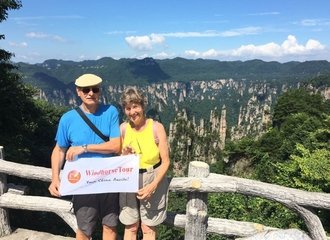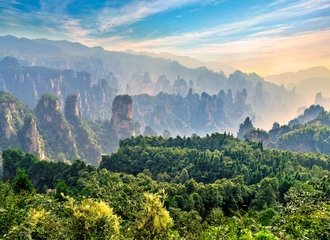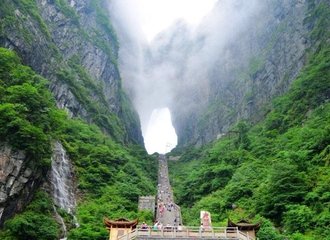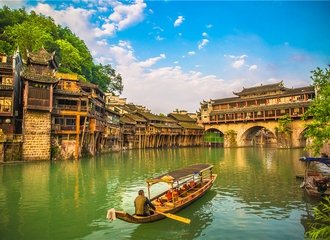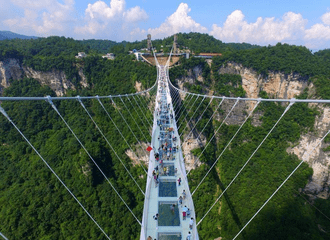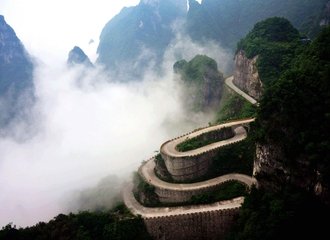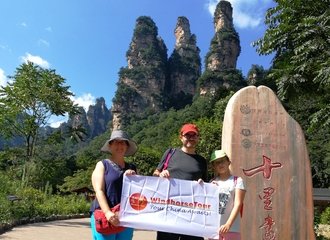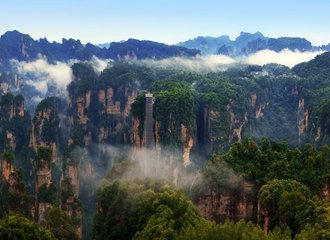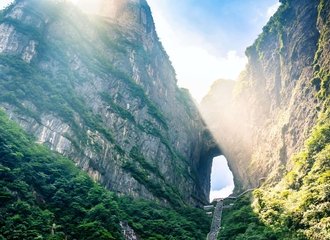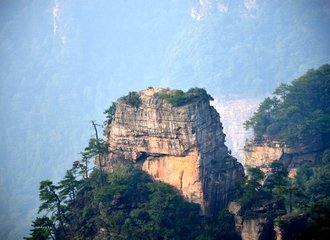Why To Choose a Mianyang Tour?

Introduction to Mianyang's Unique Attractions
The Mianyang tour has many unique attractions such as the Science and Technology Museum where you can learn lots of things about science and technology, the Beichuan National Earthquake Ruins Museum where you can come back to the 5.12 earthquake in 2008, and memorial halls where you can take a close look at the Chinese famous historical people. When you visit Sichuan travel to Mianyang which is the second largest prefecture-level city of Sichuan province in Southwest China. There were 1.3 million tourists who traveled to Mianyang during the Spring Festival in 2011.
The most popular attraction in Mianyang
If you go to Mianyang, you should visit the following attractions: Fule Mountain, Mt. Xishan Park in Mianyang, Beichuan, Pingwu County, Fo Ye Dong, Xiqiang 9 Huangshan Yuanwang Dong, Xiaozhaizigou, and Qianfo Shan. These are the most attractive places in your Mianyang tour.
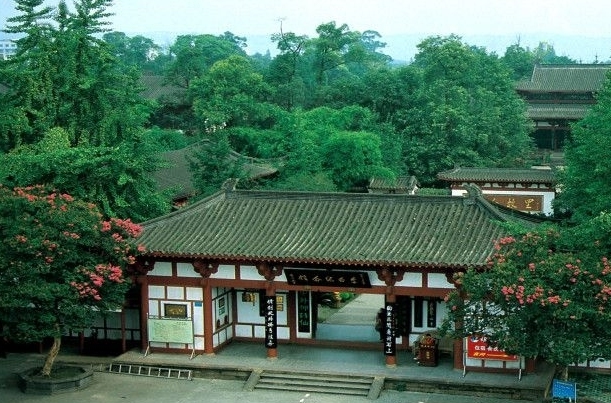
Fule Mountain
Fule Mountain is a destination rich in natural beauty and historical significance. It offers travelers the opportunity to explore its scenic landscapes and ancient cultural relics. The mountain is known for its serene environment and the panoramic views it provides of the surrounding countryside. Hiking trails lead visitors through lush vegetation to ancient temples and monuments, making it a perfect spot for both nature lovers and history enthusiasts.
Mt. Xishan Park
Mt. Xishan Park in Mianyang is a beautiful blend of natural landscapes and cultural heritage. The park features stunning mountain scenery, tranquil lakes, and a variety of flora and fauna. It's an ideal place for outdoor activities like hiking, bird-watching, and picnicking. The park also hosts several historical sites and temples, offering a glimpse into the region's rich cultural past.
Beichuan
Beichuan holds a poignant place in China's recent history as the site of the devastating 2008 earthquake. Visiting Beichuan offers travelers a deep, moving insight into the impact of natural disasters on communities. The Beichuan National Earthquake Ruins Museum and the memorial sites are powerful reminders of resilience and recovery. It's a place for reflection and understanding the strength of the human spirit in the face of adversity.
Pingwu County
Pingwu County is renowned for its stunning natural beauty and biodiversity, including the famous giant panda nature reserves. Travelers can venture into the lush landscapes to possibly catch a glimpse of these magnificent creatures in their natural habitat. The county also offers rich opportunities for hiking, bird watching, and exploring diverse ecosystems, making it a must-visit for wildlife and nature enthusiasts.
Fo Ye Dong
Fo Ye Dong is a hidden gem that offers a unique cave exploration experience. Known for its intricate cave systems and underground rivers, visitors can delve into the heart of the earth to discover spectacular stalactite and stalagmite formations. The caves are a testament to the natural wonders of the region and provide an adventurous escape for those looking to explore off the beaten path.
Xiqiang 9 Huangshan Yuanwang Dong
This attraction is known for its breathtaking views and natural beauty. The Xiqiang 9 Huangshan Yuanwang Dong, or "Nine Yellow Mountains Viewpoint Cave," offers unparalleled vistas of the surrounding mountains. It's an ideal spot for photography, hiking, and appreciating the majesty of nature. The area's serene environment and panoramic mountain views make it a peaceful retreat for visitors seeking tranquility and inspiration.
Xiaozhaizigou
Xiaozhaizigou is celebrated as one of Asia's most pristine nature reserves. Its untouched landscapes feature crystal-clear rivers, towering waterfalls, and dense forests. This reserve is a paradise for outdoor enthusiasts and conservationists, offering endless opportunities for hiking, wildlife photography, and immersing oneself in unspoiled natural beauty. It's a sanctuary where visitors can connect with nature and witness the diversity of China's ecosystems.
Qianfo Shan
Qianfo Shan, or "Thousand Buddha Mountain," is a spiritual and cultural landmark. The mountain is adorned with ancient Buddhist sculptures and temples carved into its cliffs, providing a serene and contemplative environment. Pilgrims and travelers alike are drawn to its sacred sites for meditation, to learn about Buddhist traditions, and to enjoy the peaceful, spiritual atmosphere. The panoramic views from the mountain add to its allure, making it a perfect blend of spirituality and natural beauty.
Each of these attractions in Mianyang offers a unique experience, from natural wonders and wildlife to historical insights and cultural richness, appealing to a wide range of interests and making Mianyang a diverse and captivating destination.

Tourism Resources and Cultural Significance
Mianyang has rich tourism resources, good geography, and policies that can promote tourist travel to Mianyang. First of all, with the unique natural scenery and the unique charm of the city, a Mianyang tour can attract a large number of tourists every year. Ping Wu is the giant panda nature reserve. There are more than a quarter of the total number of giant pandas in this reserve. Xiaozhaizigou within the North River is Asia’s most pristine nature reserve.
Mianyang also has a good cultural atmosphere. There are many famous historical people such as the Yellow Emperor, Liu Bei, Zhuge Liang, Sima Xiang-ru, Su Shi, Du Fu, Lu You, and Ouyang Xiu.
Yellow Emperor (Huang Di)
- Significance: The Yellow Emperor is considered one of the legendary founding figures of Chinese civilization, symbolizing the dawn of Chinese history. Visiting memorials or sites associated with him provides insight into ancient Chinese culture, mythology, and the roots of traditional Chinese medicine and philosophy.
Liu Bei
- Significance: As a key figure in the Three Kingdoms period, Liu Bei founded the state of Shu Han, embodying virtues of benevolence and righteousness. Travelers interested in this turbulent yet fascinating era of Chinese history can explore sites related to his legacy to understand the ideals of leadership and loyalty that are still admired in Chinese culture today.
Zhuge Liang
- Significance: Celebrated as a strategic genius and statesman serving under Liu Bei, Zhuge Liang is revered for his wisdom and loyalty. Sites commemorating Zhuge Liang offer travelers a glimpse into ancient Chinese military strategy, governance, and the enduring legacy of his ingenious inventions and writings.
Sima Xiang-ru
- Significance: A prominent literary figure of the Western Han Dynasty, known for his mastery of fu (rhyme-prose), Sima Xiang-ru's works offer insights into the social customs, aesthetics, and values of his time. Travelers interested in Chinese literature and art will find visiting exhibitions or sites dedicated to their life and work a rich experience.
Su Shi
- Significance: Su Shi, also known as Su Dongpo, was a versatile literatus of the Song Dynasty, famous for his poetry, calligraphy, and paintings. Sites related to Su Shi allow travelers to delve into the Song Dynasty's cultural renaissance and appreciate the profound influence of his works on Chinese literature and art.
Du Fu
- Significance: Often hailed as one of the greatest Chinese poets, Du Fu's writings reflect the social realities and personal hardships of the Tang Dynasty. Visiting places related to Du Fu can give travelers an emotional connection to the historical context of his life and the timeless beauty of his poetry.
Lu You
- Significance: A prominent poet of the Southern Song Dynasty, Lu You is known for his patriotic verses and contributions to Chinese literature. Travelers can explore sites commemorating Lu You to understand the nationalistic fervor and literary brilliance of the Song Dynasty.
Ouyang Xiu
- Significance: A key figure in the literary reform of the Song Dynasty, Ouyang Xiu's works contributed significantly to the development of Neo-Confucianism. Sites and memorials dedicated to Ouyang Xiu offer insights into the intellectual movements of the time and his role in shaping Chinese historiography and prose.
Visiting memorials, museums, or historical sites associated with these figures provides a deeper understanding of China's rich cultural heritage and the personalities who have shaped its course through millennia.
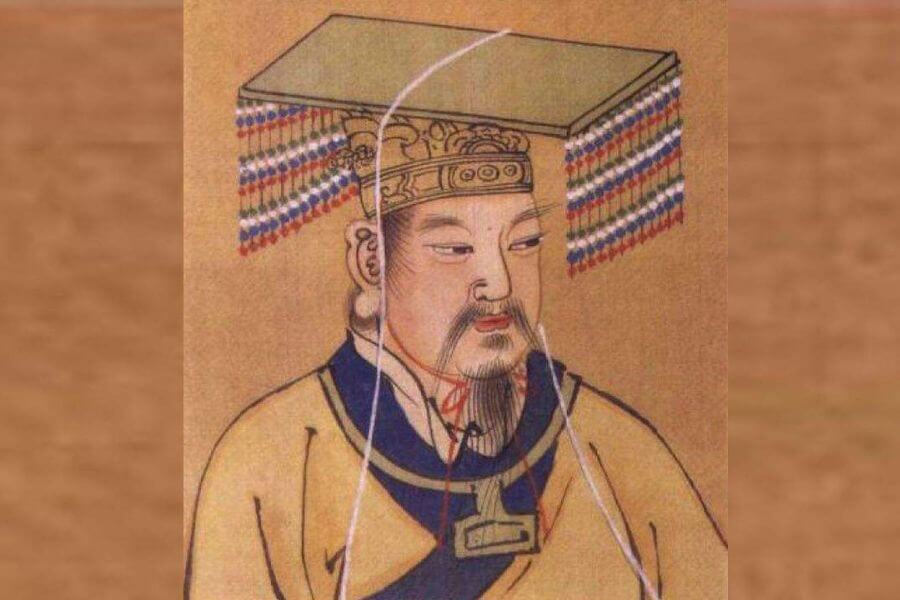
The transportation system in Mianyang
However, Mianyang’s geographic features and convenient transportation system make Mianyang easy to access especially when yo visit Sichuan. The city has both highway and railway connections to several major cities. The Nanjiao Airport has opened air lines to the major cities in China including Beijing, Shanghai, Guangzhou and Haikou. At last, the government has taken some actions to promote the tourism industry in Mianyang, including financial investment, giving preferential policies and raising publicity. They have been constructing the star hotels and major scenic spots channel since the beginning of this year.
Highway and Railway Connections
Highways: Mianyang is well-connected by a network of national highways and expressways, facilitating easy road travel to and from the city. This includes connections to major cities and attractions within Sichuan Province and beyond, ensuring convenient access for self-drive tourists and those using bus services.
Railways: The city is served by the Mianyang Railway Station and other stations that link it with China's extensive railway network. High-speed train services connect Mianyang to key cities such as Chengdu, Chongqing, and Xi'an, among others. These services provide a fast, efficient, and comfortable means of travel for visitors looking to explore the broader region.
Nanjiao Airport
Location and Services: Nanjiao Airport, located in the southern part of Mianyang, is a significant hub for air travel within the region. It offers flights to and from major Chinese cities, including Beijing, Shanghai, Guangzhou, and Haikou, among others. This ensures that Mianyang is easily accessible for both domestic and international travelers, providing a convenient entry point for exploring Sichuan Province.
Facilities and Expansion: The airport has been undergoing expansions and upgrades to accommodate the growing number of tourists and improve the overall travel experience. These developments include the addition of new terminals, increased flight routes, and enhanced passenger services.
Government Initiatives to Promote Accessibility
Financial Investment and Policies: The local government has recognized the importance of tourism to Mianyang's economy and has been actively investing in the transportation infrastructure. This includes financial support for expanding airport facilities, upgrading roads and railways, and enhancing public transportation services within the city.
Tourism Promotion and Infrastructure Development: In addition to transportation improvements, the government has been implementing preferential policies to attract tourists, such as developing tourism packages and improving the overall tourism infrastructure. Efforts include constructing star-rated hotels and enhancing major scenic spots to make them more accessible and appealing to visitors.
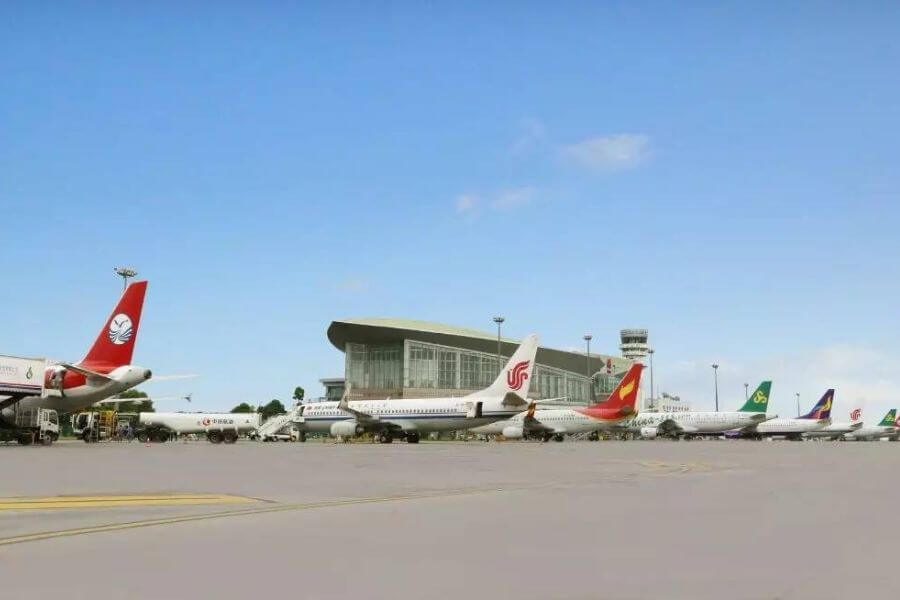
Science and Technology Hub
Mianyang, known as the “Western Silicon Valley of China”, is the only science and technology city of China. Over 18 research institutes are located in Mianyang including the China Academy of Engineering Physics and the China Aerodynamics Research Institute. Mianyang Science and Technology Museum attracts thousands of tourists every year. The main exhibits on the first floor are missiles, rockets, space stations and satellites. The main exhibits on the second floor are nuclear weapons and nuclear technology. The highlight is the 4D nuclear explosion experience center where tourists can experience a nuclear explosion of light, heat, shock waves, and other visual effects. In a word, the Science and Technology Museum is one of the reasons why people travel to Mianyang.

Impact of the "5.12" Earthquake on Tourism
There is another reason for the tourists traveling to Mianyang--"5.12" earthquake. To “Twelve Five”, the reception number reached 90,000 inbound tourism foreign exchange reached $ 49,398,200. New scenic spots (e.g. Beichuan National Earthquake Ruins Museum, the new Beichuan county town) attract lots of tourists. At the end of last year, “Tour of Mianyang, Mianyang” which is a large square promotional activity was held successfully. They immediately went to Chongqing, Xi'an, Chengdu, and other places to organize press conferences. That’s why people are willing to travel in Mianyang and a growing number of people pay attention to Mianyang’s development.
Related To:


